

Max Davies
2025 GWM Haval H7 review
6 Days Ago
An electric seven-seat SUV? You'd be surprised to know the Mercedes-Benz EQB 250 is currently your only option.



Quickly see how this car stacks up against its competition. Select any benchmark to see more details.
Where expert car reviews meet expert car buying – CarExpert gives you trusted advice, personalised service and real savings on your next new car.
All-electric seven seaters are very very rare at the moment.

Following the departure of the Tesla Model X from Australia, with no indication of when it might return, your only current SUV option is the 2023 Mercedes-Benz EQB – the EQB 250 we have on test – unless you want to look at a new electric van like the eVito Tourer or EQV.
Based on the GLB three-row SUV, which shares its architecture with the likes of the A-Class, B-Class and GLA, the EQB offers the choice of single- (250) or dual-motor (350) electric drivetrains, as well as up to three rows of seating.
In Australia, issues around rear axle loading mean the higher-spec EQB 350 4Matic is unable to be optioned with a third row of seating, meaning the entry-level EQB 250 is the sole option locally if you want a seven-seat EV.

Priced from $87,800 before on-road costs, the EQB 250 slides under that magic $100,000 marker on the road, with the third row of seating adding a not-insignificant $2900 to the base pricing.
With no direct rivals in this specification, is the 2023 Mercedes-Benz EQB 250 be a standout?
As noted earlier, the EQB 250 starts from $87,800 plus on-roads – which is barely $5000 more than the petrol GLB 250 4Matic.

Adding the $2900 three-row option bumps the price to just north of $90,000 before taxes, with a number of other cost options and packages available – though not all are compatible with seven seats.
For the full price and specs breakdown for the EQB range, click here. We’ll also detail more of what you get and what’s optional further down in this review.
Currently, the only other seven-seat electric SUV is the Tesla Model X, though it’s unavailable to the Australian market after its most recent set of updates. When it was last on sale, it was priced from $157,875.
If you’re happy with a van, or van-based EV, Mercedes-Benz will also sell you the eVito Tourer (from $116,115) and EQV (from $155,338), and it also has the three-row EQS SUV on the way.
Beyond that, you have the LDV MIFA 9 people mover hailing from China, but that’s about it. Kia will add its Hyundai Palisade-sized EV9 SUV to the mix later this year, albeit in very limited numbers (circa 400 units in 2023).

2023 Mercedes-Benz EQB pricing:
Prices exclude on-road costs
Like a GLB, and by extension like an A-Class, B-Class or GLA.

A taller, more upright version of the Mercedes-Benz Compact Class interior features here, headlined by dual 10.25-inch displays running the first iteration of the MBUX connected infotainment interface.
It’s a familiar system that’s attractive to look at and fairly easy to use, with features like navigation with traffic, as well as digital radio, Apple CarPlay, and Android Auto.
There’s an option which brings augmented reality (AR) navigation as part of the MBUX Innovation Package ($2500), which also adds a head-up display. AR navigation overlays a live front camera feed with the mapping prompts in your cluster or the infotainment display, which is both helpful and a great party trick.
MBUX 1.0 only offers wired smartphone mirroring, and with the placement of the USB-C port (and a tightly-packaged phone slot with charging pad), using Apple CarPlay and Android Auto risks your smartphone being flung around the cabin.
It’s a shame the EQB with its high-tech drivetrain doesn’t have the highest-tech infotainment from Mercedes, though an upcoming facelift in line with the GLB is expected to bring MBUX 2.0 with wireless functionality.


Tied to the infotainment in the same housing is the 10.25-inch digital driver’s display, which is as clear and configurable as the best of them.
I enjoy the array of layouts and options, and the graphics are as good as in higher-end Benzes. Controlling them with the fiddly touch squares on the steering wheel, though, can take a little getting used to.
Speaking of the steering wheel, there’s plenty of adjustment in the steering column as well as the driver’s seat to get comfortable for longer journeys. The tall cabin and big windows also lend a bright and airy feel.
Our tester was from an early batch of vehicles that had manual seat adjustment (weird, we know), but Mercedes-Benz assured us at the launch (November 2022) new orders would feature power-adjustable front seats with heating.
I do find it odd that you still have to option memory presents for the front seats, however.


Being based on the GLB and by extension the B-Class, space efficiency and optimisation is a key focus point.
Storage options in the front row include dual cupholders with a wireless smartphone charger, though as noted earlier the placement of the USB-C port for smartphone mirroring seems like an odd choice.
There’s also a deep, dual-lidded centre cubby with further USB-C points, and it’s deep enough for large bottles or similarly-sized items.
The EQB’s door pockets are deep, if a little skinny. Still, there’s heaps of room for your odds and ends.




In the second row the EQB scores some points back, thanks to its segment-busting packaging.
Despite its compact car underpinnings, the EQB offers leg- and headroom on par with larger rivals. It’s like a Skoda Kodiaq or Volkswagen Tiguan Allspace inside.
The second row slides for and aft, and the backrests can be reclined. It’s a very configurable space.
Amenities include rear air vents, an additional USB-C charge port, netted map pockets behind the front seats, bottle holders in the door pockets, and a fold-down centre armrest with cupholders.
I can comfortably sit behind my preferred driving position at 6’1, and you’ll be able to squeeze three average-sized adults for short trips. Kids will love it back here, and the littlest ones will be catered for thanks to ISOFIX anchors and top-tether points.


The third row of seating is less impressive, but it remains a rarity in this class – even if you take out the EQB’s electrified drivetrain.
A pair of individual seats folds out from the boot floor with adjustable headrests, and will accommodate smaller kids and adults – but think of this more of a 5+2, rather than a proper seven seater.
Mercedes-Benz says the rear seats are suitable for persons up to 1.65 metres tall. The elevated seating means headroom is tight for taller passengers, though knee and legroom are decent for the class thanks to the sliding second row.
Props to Mercedes-Benz for engineering seats that actually raise off the floor and don’t leave your knees on your chin, though the skinny armrests, cubby holders and cupholders are pretty basic. Hey, at least they’re there if you option the three-row interior.


The EQB quotes 130 litres of boot space with seven seats in use, 495 litres with the second row in place, opening up to 1710 litres with the second row folded.
As a reference, the non-electric Volkswagen Tiguan Allspace quotes 230L/700L/1775L in equivalent configurations.
No spare wheel features on the EQB spec sheet. Instead, there’s a tyre inflation kit. The lack of a spare meant I ran into a bit of trouble during my time with the car.
No ‘frunk’ like a Tesla or some other EVs.

The EQB 250 has a 140kW/385Nm electric motor on the front axle, hooked up to a 66.5kWh lithium-ion battery.
Mercedes-Benz generally quotes the ADR 81/02 certified driving range of “up to 507 kilometres” based on an energy consumption figure of 16.7kWh per 100km, though the local figure is based on the more lenient NEDC regime.
Per stricter WLTP specifications, the EQB 250 quotes a far less impressive 371 kilometres of range on a full charge. Based on our real-world usage, we’d wager you’ll see closer to 350 kilomtres.
Mercedes-Benz claims a 9.2-second 0-100km/h acceleration time, a whole 3.0s slower than the dual-motor EQB 350 4Matic.
The EQB can be recharged at up to 11kW via an AC input, or up to 100kW using a DC fast charger. At its peak charge rate, the EQB can be replenished from 10 to 80 per cent in as little as 32 minutes.
While its outputs and performance claims might seem meek on paper, the GLB 250 is quite a nice thing to drive.

Having spent some time in both the 250 and 350 versions back-to-back, it was the EQB 250 that stood out to me as the pick, thanks to its smoothness and refinement as well as better efficiency.
The GLB is already the most premium-feeling member of the compact Benz range, and the electric drivetrain of the EQB 250 only emphasises that.
Effortless, silent acceleration is married with a pliant, well sorted ride despite our tester’s optional 20-inch salad spinner alloys shod in low-profile 235/45 tyres.
Like its combustion-powered sibling, the EQB offers light, fluid controls that make piloting this boxy crossover a cinch, and insulation from the outside world is good without being standout.

Where expert car reviews meet expert car buying – CarExpert gives you trusted advice, personalised service and real savings on your next new car.
With all 385Nm on tap from the moment you prod the accelerator, power delivery is linear and responsive, even if the 9.2-second 0-100 claim is off the pace compared to some EV rivals, let alone its combustion-powered equivalent.
It does its best work in urban and city environments, getting up to 60 or 80km/h without breaking a sweat. It rarely feels laboured or underdone, and as noted earlier it’s very refined on the move.
There’s plenty of different regenerative braking settings from next to nothing to near one-pedal driving, as well as an adaptive mode that uses the forward-facing vehicle sensors to adjust the system on the fly.
I tended to use the most aggressive regen setting just so my head could get around a consistent feel, as the adaptive setting can take a little getting used to.
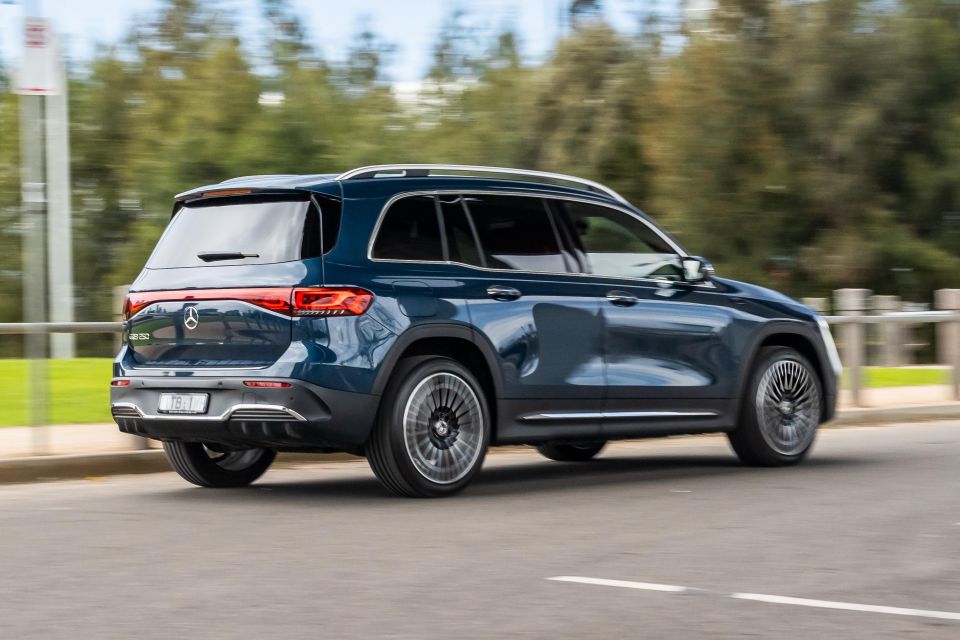
Let’s be clear though, the EQB is still a perfectly capable highway cruiser.
Even with its boxy profile and big wheels the electric Benz hums along quietly at triple figures, with only hints of tyre roar and wind whistle permeating its airy cabin.
I loaded up with four passengers at one point and with the extra weight the EQB 250 remained a comfy and quiet place to spend time.
Props to Mercedes for retaining the GLB’s vast glasshouse, as the EQB offers excellent outward visibility from all angles which makes this family bus quite easy to park and place in tight streets.

One issue I encountered was a flat tyre during our time with the EQB. It must have picked up a bad puncture because it showed no pressure warning on the instrument cluster, then a couple of hours later it was almost completely flat.
Now, you’d think the main issue would be the lack of a spare wheel – but no, it got worse. When I went to tyre shop to get it assessed, I was soon informed that there were no replacement units in stock anywhere in Victoria at the time…
Keep in mind I had the car in early November, a month or so after the media launch, but if I wasn’t lucky enough to pluck a spare off another press car (meaning I had to wait hours for the wheel to be delivered to the tyre shop I had the EQB parked up at), I would have been stranded for a number of days.
This should be rectified by the time of publication, but if I was one of the first buyers that would have been a tough pill to swallow…

The EQB 250 comes standard with the Driving Assistance Package as standard, meaning it gets adaptive cruise control with stop/go, as well as Active Speed Limit Assist and Active Steering Assist for semi-autonomous highway driving.
Mercedes-Benz has long considered itself the benchmark for autonomy and safety tech in its vehicles, I had high hopes for its assistance suite. Thankfully, they all work really well.
Other highlights include blind-spot assist and exit warning functions, which are those good-to-have things that don’t pay themselves on until that time you need them (which is usually in a split-second).
All told, it’s a nice thing to drive. My main gripe is the range (or lack thereof).




EQB 250 highlights:


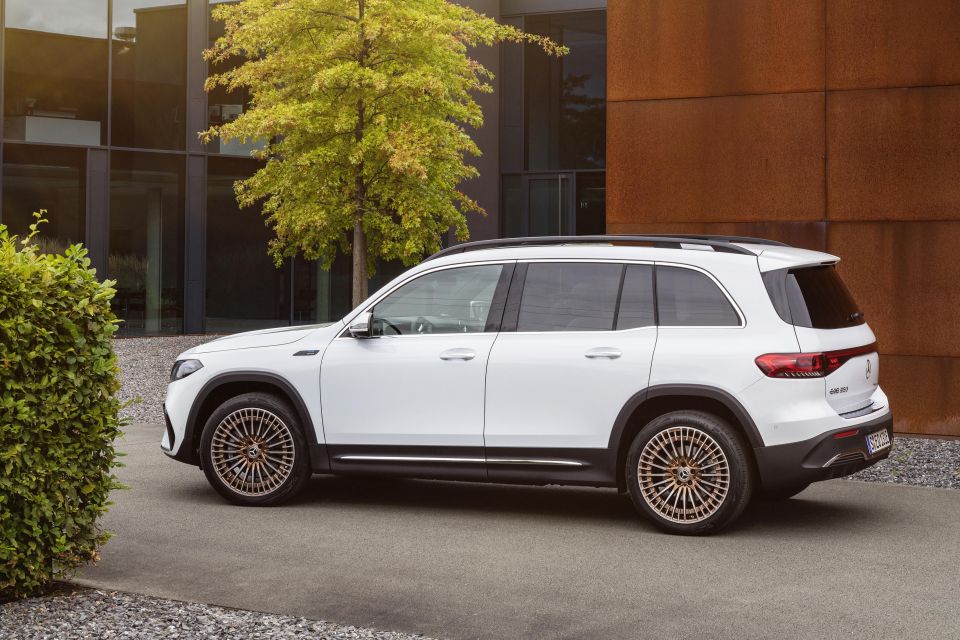

Edition 1 package: $9100 (EQB 250), $3900 (EQB 350 4Matic)
Vision Package: $3000 (EQB 250 5 seat)
MBUX Innovation Package: $2500


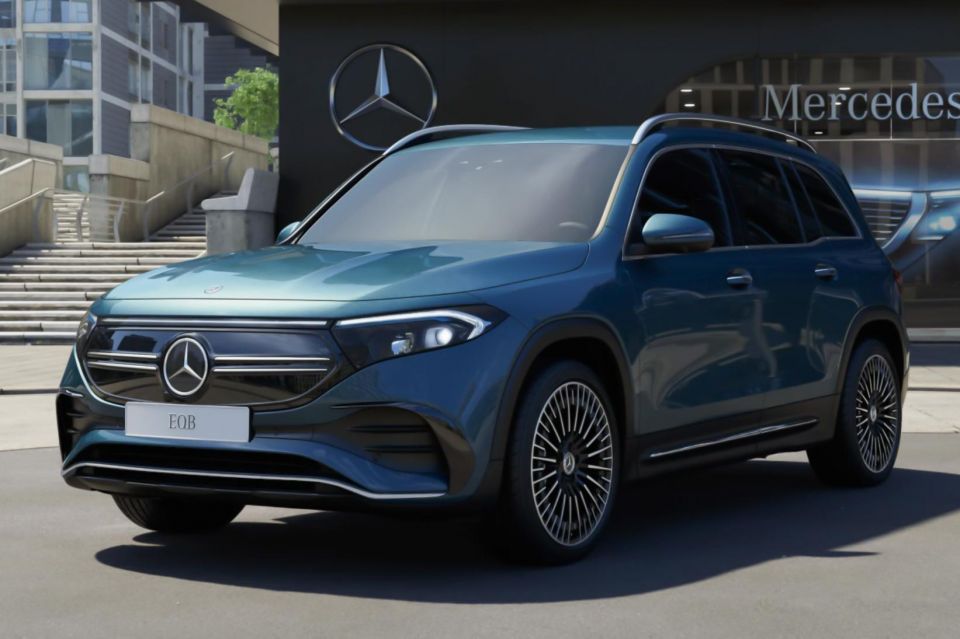






Solid: $NCO
Metallic: $1490
Matte: $3300
The EQB wears a five-star ANCAP safety rating based on 2019 tests, though this applies only to the EQB 250 – the EQB 350 4Matic is unrated.
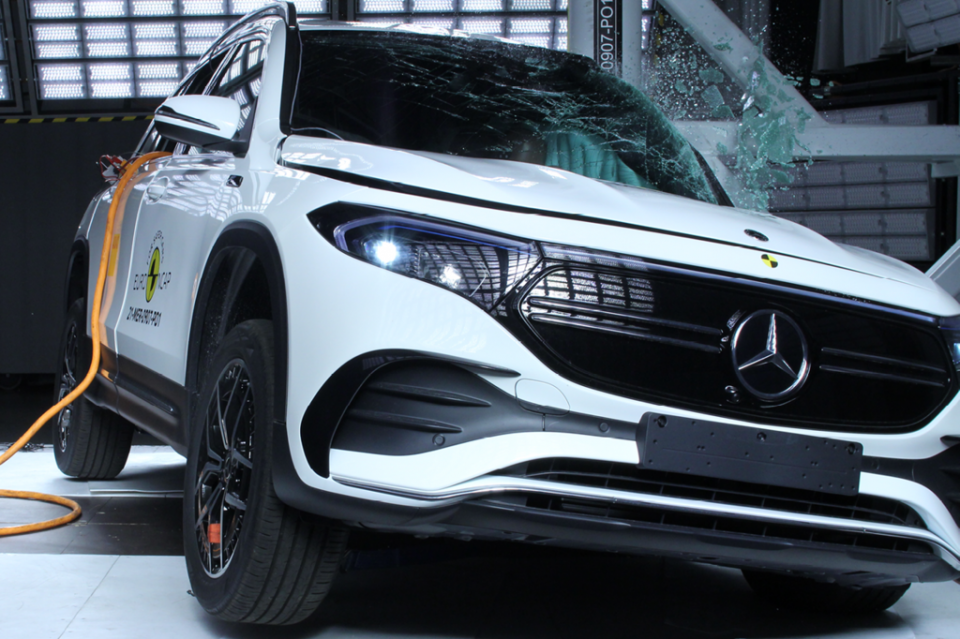
It received an adult occupant protection score of 95 per cent, a child occupant protection score of 91 per cent, a vulnerable road user protection score of 78 per cent, and a safety assist score of 74 per cent.
Standard safety equipment includes:
Mercedes-Benz covers its range with a five-year, unlimited-kilometre warranty.

Servicing is required every 12 months or 25,000km, whichever comes first.
There are three-, four- and five-year service packages available, and for the EQB they’re priced at $1625, $2225 and $2650 respectively.
As for efficiency and range, we saw an indicated 19.1kWh per 100km during our week of testing in mixed conditions for the EQB 250, which is up on the brand’s 16.7kWh per 100km claim.
That translates to a circa-350km of real-world range based on those figures, which is okay but by today’s standards as well as this price point, anything under 400km is a bit off the mark. I imagine consistent use of all three rows will see that figure drop even lower.
We tried a couple of charges at some DC charge stations to check out fast-charge performance too. The EQB 250 could consistently peak at just under its 100kW capacity, with one session returning 49.27kWh in 40 minutes.
Mercedes-Benz throws in a one-year subscription to the Chargefox public charger network, including ultra-rapid stations.
The EQB 250 – with the seven-seat package optioned – has all the ingredients to be a standout.

It has the electric drivetrain that so many customers are looking for these days, it has a premium badge on the bonnet, and the option of seven seats basically renders it rival-less in the Australian market.
The smooth drive, refined cabin, and familiar appointments will appeal to current customers, but there are some caveats. It’s also the least offensive of the new range of Mercedes-EQ models to look at, at least to my eye.
For me, the range simply isn’t good enough especially for a vehicle released in 2022. If we can clip various mainstream manufacturers for range in substantially more affordable EVs, Mercedes should have done better with the EQB.
A larger battery pack would have been a good start.

It’s also quite expensive, at over $100,000 on the road including that third row of seating that doesn’t come standard. You also can’t have a fully-optioned car with seven seats due to packaging issues, which seems like an oversight.
That pricing also seems steep when there’s little distinguishing the interior of the EQB from the GLB, which isn’t the most luxurious premium SUV to begin with. The long list of pricey options dulls the value equation further.
Then again, what is perceived as ‘value’ when the EQB effectively has no direct competitors? When you consider the EQB 250 is $6000 dearer than the EQA 250, it starts to make more sense.
My ideal spec of EQB is the 250 with the optional third row, MBUX Innovation package, front seats with memory and the light ARTICO leatherette interior with optional brown wood trim. With the standard 19-inch alloys and Denim Blue metallic paint like our test car, you have a circa-$96,000 premium EV with three rows and a good smattering of luxury appointments.

Click the images for the full gallery
Where expert car reviews meet expert car buying – CarExpert gives you trusted advice, personalised service and real savings on your next new car.
James is an automotive journalist based in Melbourne, Australia. Before joining CarExpert.com.au in 2020, James has worked at leading auto media outlets including Carsales and CarAdvice, as well as at Pulse agency for Ford Australia's communications team. In 2019 James made Mumbrella's 'Top 20 most prolific web authors in Australia' list after publishing 1,360 articles between March 1, 2018 and February 28, 2019 for CarAdvice. James is also an Ambassador for Drive Against Depression – an Australian charity whose mission is to support mental wellness through the freedom of driving and a shared love of cars.


Max Davies
6 Days Ago


Josh Nevett
5 Days Ago


Josh Nevett
4 Days Ago


Paul Maric
3 Days Ago


Anthony Crawford
2 Days Ago
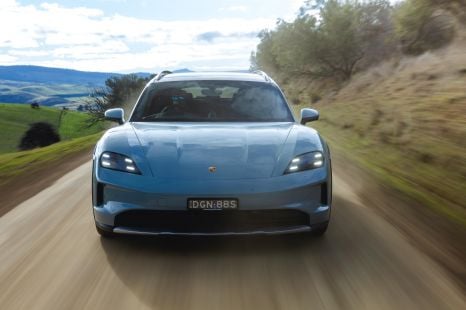

Derek Fung
2 Days Ago